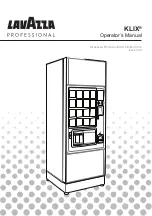
6–17
1
2
3
4
5
6
ït
çi
FACSIMILE SYSTEM
3.9
Relay Operations
The following describes operation of each of the relays.
• CML relay (Connect Modem to Line relay)
This relay is for switching between the facsimile and the telephone (hand-
set or extension telephone) that is the core function of the NCU board.
With regular relays, an instantaneous circuit interruption occurs at switch-
ing. If a regular relay is used for the CML relay, there is the possibility that
the
exchange
will malfunction because of this short break. For this reason,
an early make break relay designed to prevent short breaks is used for the
CML relay.
• H relay (Hook relay)
This relay is for enabling detection of the off-hook state on the telephone
(handset or extension telephone) during facsimile communications. As the
CML relay switches to the facsimile side during facsimile communica-
tions, the voltage is not supplied to the off-hook detection circuit. When
the H relay switches to the voltage terminal for off-hook detection, voltage
is supplied to the off-hook detection circuit to enable detection of the off-
hook state of the telephone even during facsimile communications.
• P relay (Pulse relay)
This relay is for generating the dial pulse (DP). A relay is used for prevent-
ing chattering or sparks.
• S relay
This relay is for shaping the pulse waveform that is generated by the P
relay. A relay is used for preventing chattering or sparks.
• R relay
This relay is exclusively for 230 V regions. It is used for sending signals to
a private branch
exchange
when the R key is pressed. A photo-MOS relay
is used for this relay.
















































